Open Mic is the series on BLISTER where we invite various people in the outdoor industry to say what they have to say, and share whatever it is they feel like sharing at this particular point in time.
Today, we hear from Leilani Bruntz:
About Leilani Bruntz
Leilani Bruntz is a professional guide, sponsored athlete, and creative based in Crested Butte, Colorado.
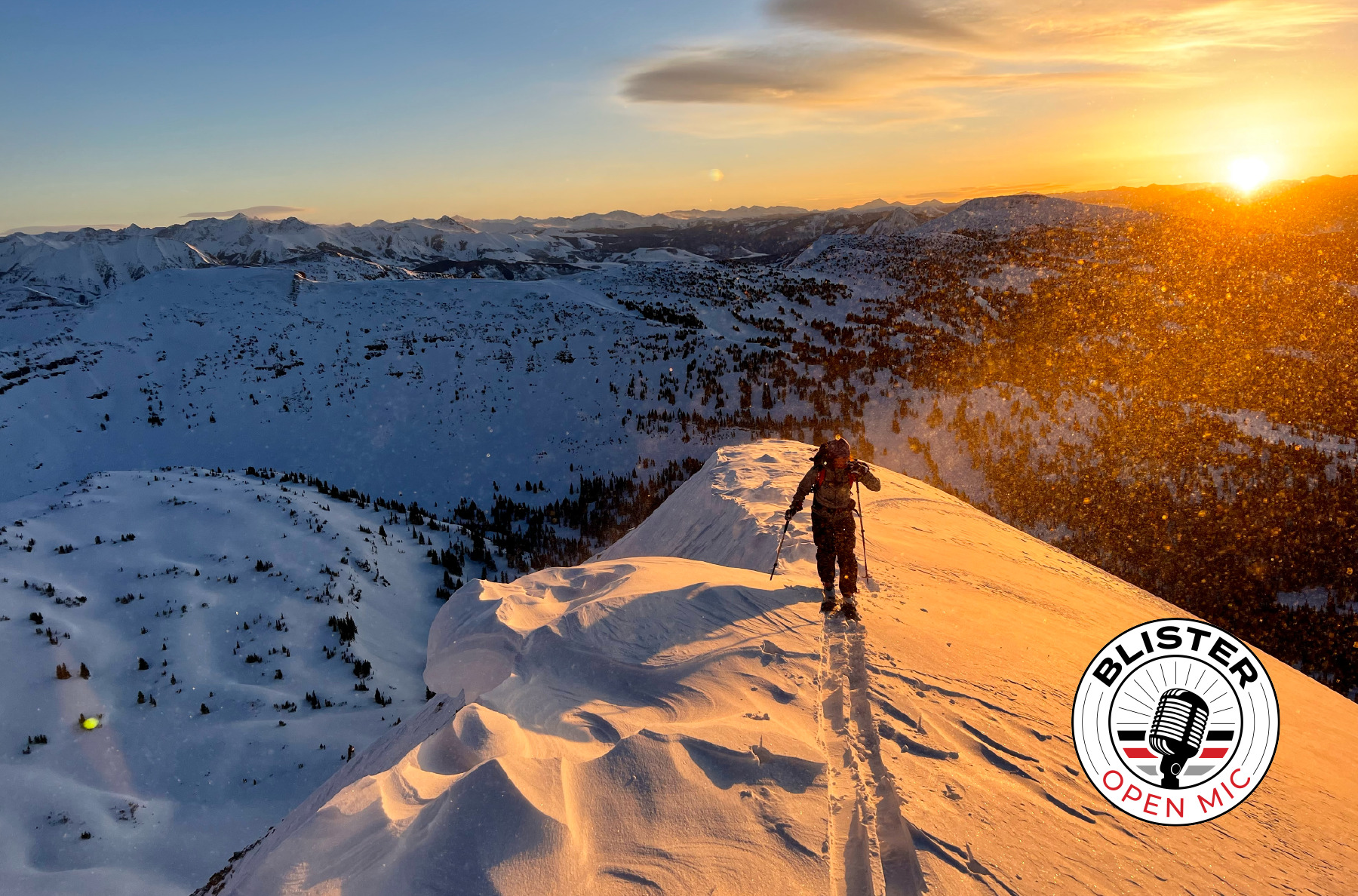
Last month, my life took a turn after needing a helicopter evacuation from the backcountry that led to three surgeries and four days in the hospital.
Days like this are definitely not the most fun to talk about, and often, I think our impulse is to keep the details to ourselves — talk up and show off the great moments in the mountains, and keep the stoke high.
But I think we all understand, too, that we need to talk about and process the moments when things go wrong, since things will always, inevitably go wrong at some point, and someone else’s experience — their good decisions, bad decisions, and the tricky decisions — all of it — might prove to be valuable when we get into trouble, and / or when someone in our group gets into trouble.
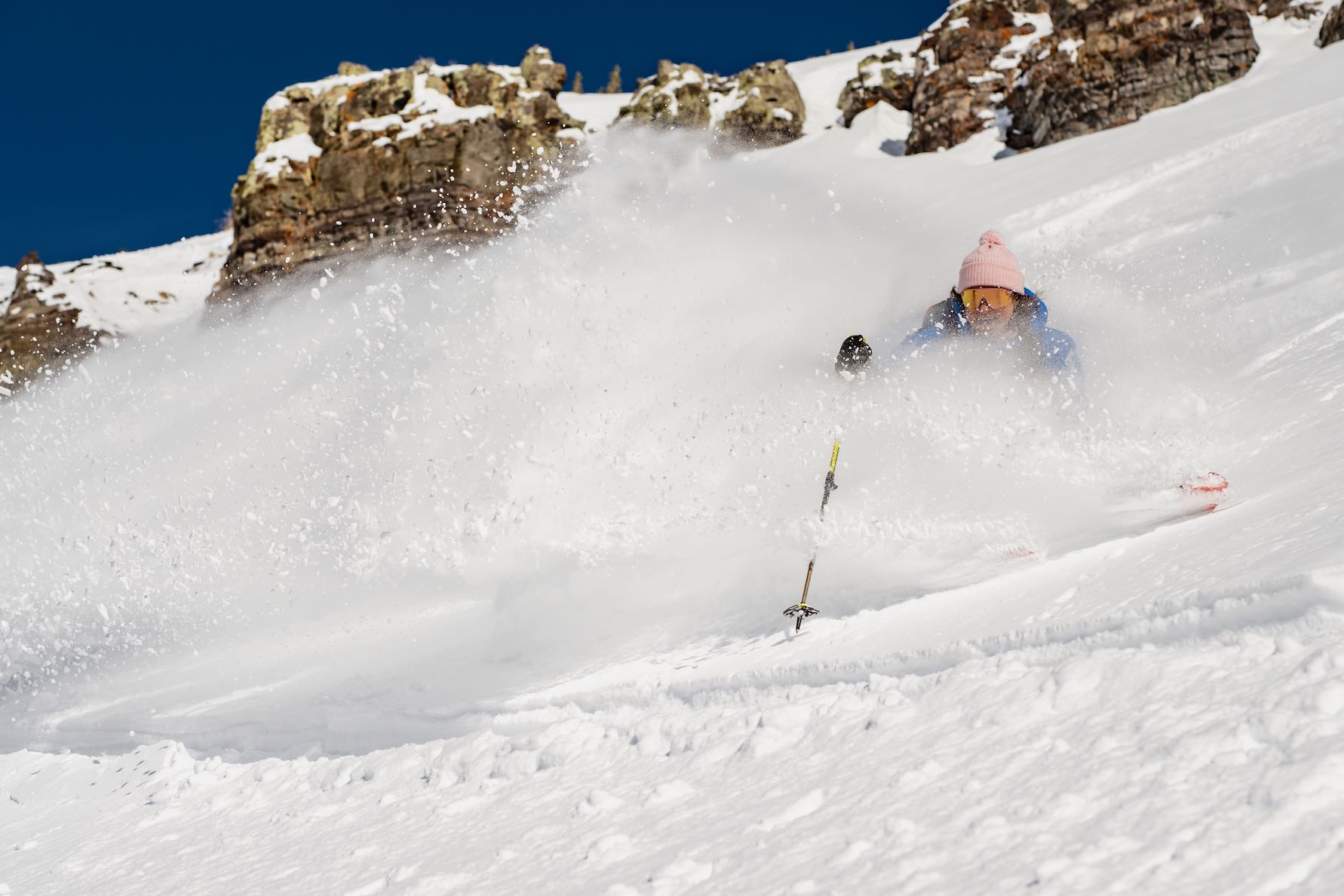
On April 26th, my day started in the dark, like most of my days, skinning up Mt. Emmons. In the winter months, it’s my go-to dawn patrol, where I can knock out a quick 3,000 feet of vertical before 7:00am, when I typically meet fellow guides at the trailhead. We then commute on snowmobiles 12 miles into the remote backcountry location where I work. The trailhead is a 1.5 mile commute from the town of Crested Butte, making for the perfect dawn patrol mission — quick, efficient, and with plenty of options for skiing solo in non-avalanche terrain. When stability permits, there are plenty of steeper options on all aspects of this mountain that hovers just above the town.
On this particular day, I didn’t need to rush to work after my ski. It was springtime, and I had just returned home from heli-ski guiding in the Troll Peninsula of Iceland two days prior. It had been a busy winter guiding in Japan, Colorado, Iceland, and there were also multiple ski trips to Montana and Utah for photo and video shoots.
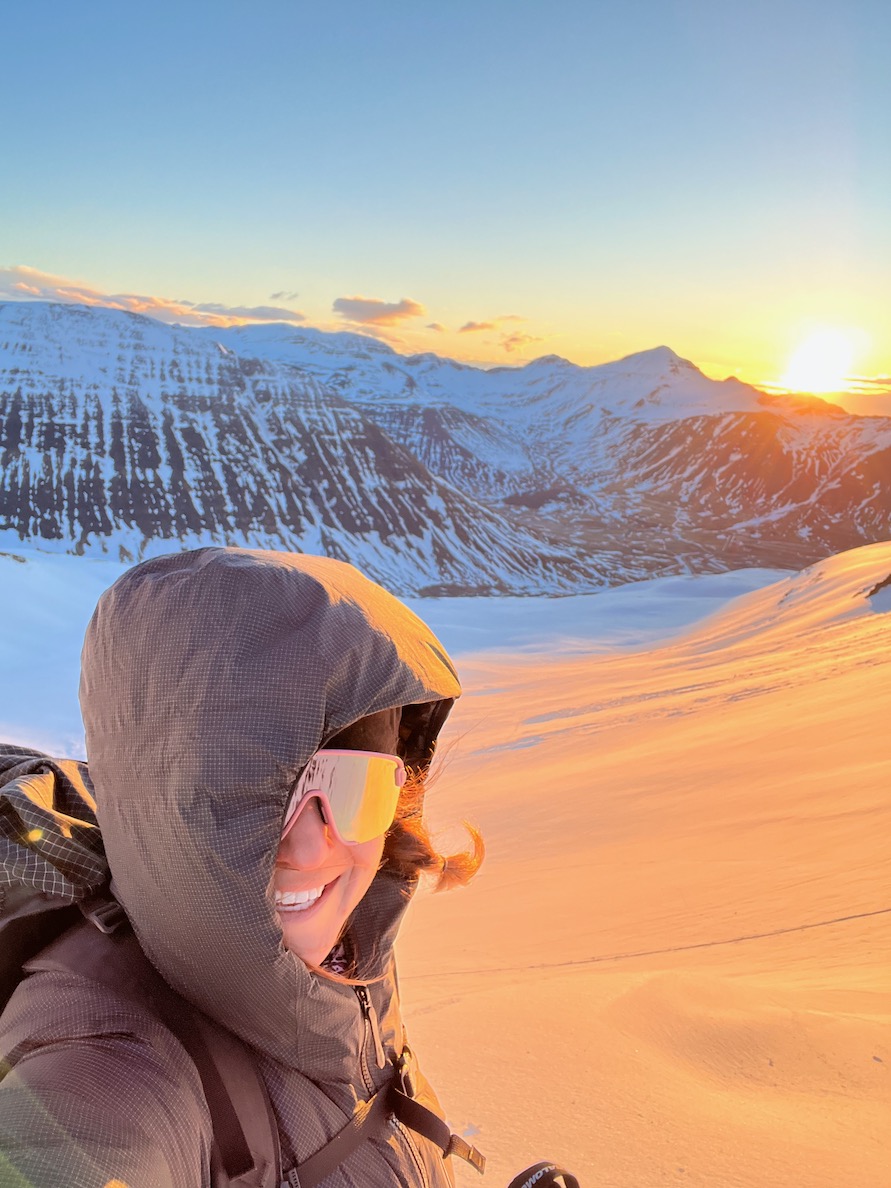
Despite not having work to get to, my day still started in the dark. I had hopes of skiing multiple laps on different, northern-facing terrain, and the forecast was calling for clearing skis and warming temperatures that would quickly transition the few fresh inches of snow that fell two days prior into mush, and eventually, corn.
Spring kept trying to push out our seemingly endless winter, though without much success. Temperatures were forecasted to climb up to forty degrees fahrenheit, so warming instabilities were expected later in the day. The day would start with low avalanche hazards across the board aside from isolated and small wind-slabs before receiving strong solar input. So I set out early.
I reached the ridge with the rising sun. I had to layer up to keep the cold breeze off of my face and body. Clouds draped low over the mountains, and slowly revealed the white peaks all around as the sun lit up the valley — the fourteeners of Snowmass and the Maroon Bells to my east, and the magnificent Ruby Range to my west.
There was nothing particularly technical or challenging about my planned ski — just a feel-good fun day maxing out vertical in very familiar terrain.
I elected to ski on the northeast side of Redwell (a northwest bowl on Mt. Emmons) as the sun lit this side first. The wind from the prior days was felt up high through a combination of wind-pressed and wind-scoured snow that smoothed out the lower down I skied. My friends remained on the ridgeline taking photos and a video. Delighted for a second lap in this bowl before bumping to a northeast-facing bowl off of the same peak, I set a skinner through the 3-6 inches of snow back to the ridgeline.
Next, I dropped in on the northwest side of the bowl. The first turns were icy and firm, but quickly transitioned to the slightly wind-affected snow — again, variable, but not tricky skiing.
Less than a third of the way down the run, I caught a tip. Suddenly, my ski ripped behind me with a loud snap, stopping me in my tracks, literally. It didn’t cause me to fall, but I was stuck bent over my left ski uncomfortably, while my right leg was twisted unnaturally behind me. I felt helpless. My head was in the snow, and while I could manage to breath, I had no strength or motor control to move my foot and free my ski from the snow it was stuck beneath. I tried multiple times feeling almost as though my upper leg wasn’t attached to my lower leg. The slightest effort to twist and lift sent a zinging feeling through my entire body. It was a debilitating sensation of pain and realization that things had taken a dramatic turn. I had never broken a bone, but I knew right then and there, my leg was broken.
I called my friends who were still on the ridge, and asked for help. Izzy, a friend and videographer, skied down to assist me. She freed my ski from the snow, and worked to remove my binding, while I radioed to inform our friend, Sara, on the ridge that I suspected I had broken my leg, and I asked her to call Search and Rescue (SAR). It was 9:00 am.
The first thing that crossed my mind was the time it’d take to get help, and the urgency in getting a call out to SAR. An average rescue takes 8 hours, but of course, it can be shorter or much longer. Based on how impossible I found it to even get myself out of my precarious position, I struggled to imagine being able to ski out on one ski.
Once Izzy was able to remove my ski, I attempted to put weight on my leg, but keeled over from pain and lack of stability. I needed a moment to collect my thoughts. I had recently met Sara, Bianca, and Izzy. A creative project brought us together, and it was our first time skiing together. They were from out of town, so I was leading the tour. I had deliberately packed my gear that day, recognizing that I was skiing in very familiar terrain that isn’t challenging for me, but alongside new ski partners. I carried more than I normally would skiing this terrain this time of year, but not a complete pack that I’d guide with.
I switch between carrying a rescue sled (the alpine threadworks sled) and the Ortovox 2-person bivy in the backcountry. I considered the avalanche hazard, complexity of terrain we’d be skiing (and mostly that I’d be skiing as they were taking photos and video that day), along with the forecast. I opted to carry the bivy instead of the sled, which has features to wrap and drag, but I didn’t bring a cordelette or rope.
To ski out from where I was, another 2,000+ feet of descending would be required, with steeper roll overs to be managed down low that parallel a waterfall, and are bound by incredibly tight trees. I assumed the waterfall could have begun to thaw out and open up. We’d have a river crossing before the four-mile exit through a rolling valley to where we had dropped a car the night before to be able to loop the ski tour. I rely on my body for work, so the idea of adding to my injuries caused me to quickly cross this off of my list of options.
Another option would be to get rescued and drug in a sled, which would take hours and hours. Having done drills and rescue scenarios with an improvised rescue sled, I know how physically exhausting and incredibly slow going this would be.
The third option seemed best: return to the ridge and get evacuated from the other side from which we skinned up via snowmobile assistance, or ideally, a helicopter.
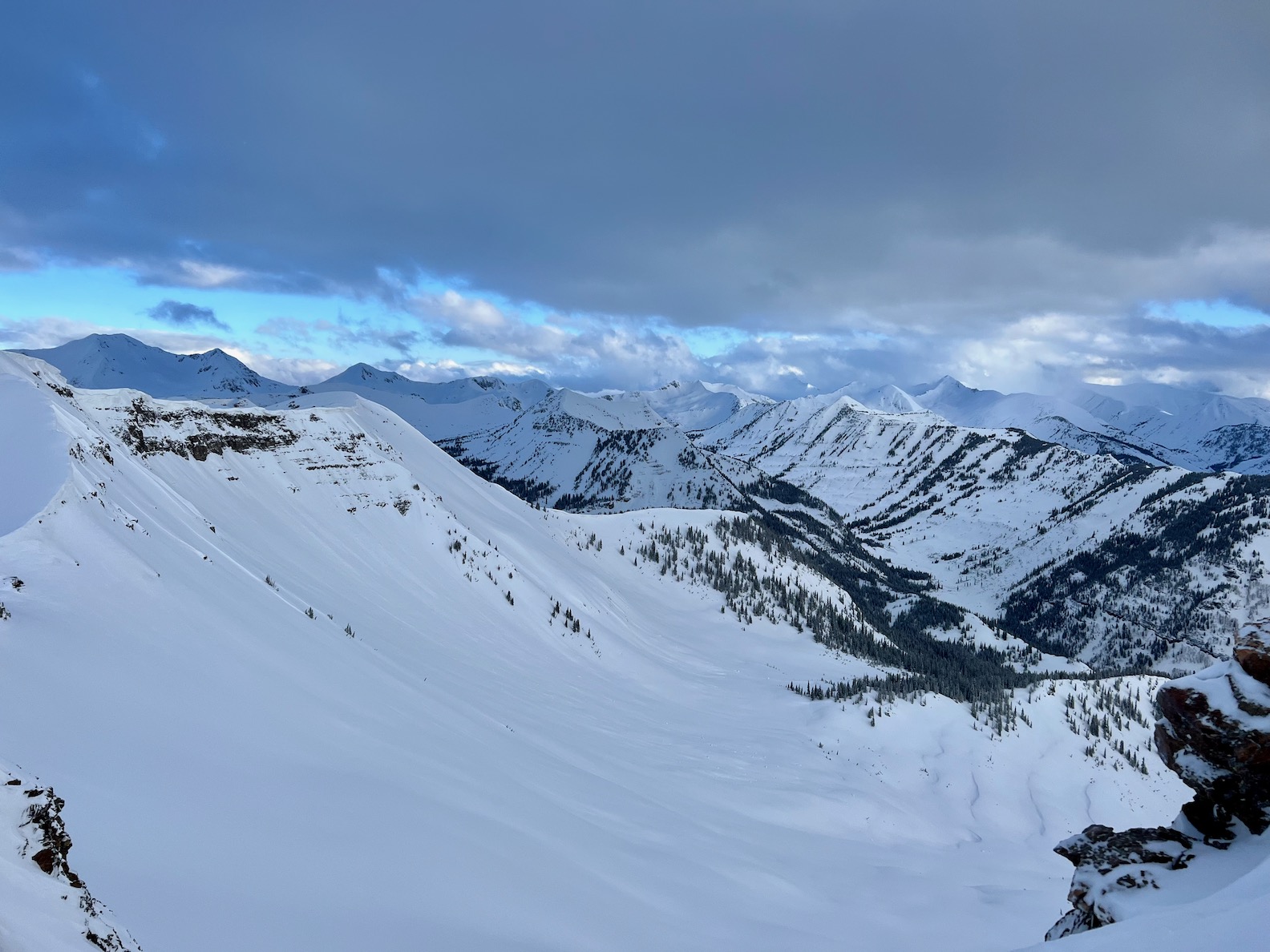
Izzy helped retrieve the two-person bivy from my pack and carved out a small platform for me to sit down on and collect my thoughts. Assessing my situation as clearly as I could, I knew at that point we’d need help to get me out of there. I’ve suffered from cold injuries on my toes, and immediately lost feeling in all of them. Managing the aftermath of frostbite, I recognized an added urgency to my situation. Cell service was spotty, but it was good enough from both the ridgeline and from where I was stuck to communicate directly with 911 and SAR, rather than using our inReaches.
By this time, 9:20, I followed up directly with my friend who spearheads our local SAR team. It was both reassuring and devastating to hear his voice on the phone. I recognized I had gotten myself in a situation where I needed additional resources to get myself out, stat. But my reality outweighed my ego, and I explained my exact location and anticipated injury.
Together we decided that the best course of action was for me to make my way to the saddle of the ridge in search of a landing zone large enough for a helicopter. It needed to be flat and unobstructed in a 100×100-foot zone. The saddle was not a guarantee, but it opened up better options for an evacuation. Meanwhile, a ground SAR team was deployed on snowmobiles.
With the help of the girls, who carried my backpack and the ski that used to be attached to my injured leg, I very slowly inched my way across the upper section of the bowl on one ski. I relied on the years of double poling as a collegiate nordic racer, and carefully used my poles to balance myself, and propel me forward, but ever so slowly. I had to thrust my hip forward to actually move, literally an inch at a time, which caused my broken bones to grind against each other. The crepitus was more unsettling mentally, but it was still physically crippling at times. With the grinding and clicking of bones, I started to realize that I must have more than one fracture.
Eventually, I made it directly below the saddle. Skinning up to it was not an option, so I scooted on my butt. I used my poles as leverage to more effectively push my way up and through the snow. It worked rather well, but despite my best effort to hold my broken leg in the air, the grinding sensation persisted with each movement — click, grind, click. The boot naturally splinted the breaks, but the crepitus persevered.
My mind wandered, reminiscing on all of the ski objectives I had planned for this spring. I panicked thinking about the impact on my career, and how it’d set me back. How I’d be out of work. How much this injury would cost me. But I’d bring my mind back to the saddle, and the decreasing distance between me and what I believed would be my rescue zone — where a helicopter could scoop me.
I arrived around 10:30. The girls laid out my bivy once again, and helped me stay warm by placing all our spare puffys between my body and the bivy as insulation from the snow. We also elevated my leg with the help of a natural pile of snow.
Despite being sheltered from the breeze, having multiple puffy jackets and extra layers and the burley bivy, I felt the cold seeping in. Colleagues have shared stories of how a lightweight Thermarest had been a lifesaver in any sort of emergency situation, yet I’ve never packed one when I’m not guiding or winter camping. Never again will I leave that behind, because it takes no time for the cold from the snow to creep through an injured and impaired body, even on a warm, spring day.
We checked back in with SAR at this point and let them know that the saddle would not be large enough to land the helicopter. Moments later, the first three team members arrived on snowmobiles at around 10:45. The sight of another friend and familiar face who I had worked alongside, me on the snow safety team and him on the SAR team, for Grand Traverse just a month before made me cry.
I had been nervous to take the oxycodone I had in my first aid kit due to a history of feeling nauseous on prior occasions. The SAR team gave me fentanyl instead, and an anti-nausea pill. By this point, my pain was so high I couldn’t fathom the idea of sitting on the back of a snowmobile to descend a few hundred feet into Evans basin. I leaned in to needing help. The SAR team loaded me into a toboggan and skied me down a few hundred feet of low angle terrain to a flat landing zone in Evan’s Basin.
Despite a few rogue timber sledders roosting through the landing zone, which kept the helicopter circling in the air, it eventually landed. The team loaded me, and I was on my way to the hospital around 11:30.
I underwent surgery in the early evening to fix the spiral fractures in my tibia, and multiple fractures near my ankle joint. The next day, my calf swelled up bigger than my thigh, as I had developed compartment syndrome, requiring a fasciotomy. The surgeon made an incision on the right side of my calf, and I remained in the hospital while the swelling subsided. Two days passed with a wound vac, and I went under again to have the incision closed up. By then, I knew everyone in the hospital on a first-name basis.
It’s wild how quickly my world shrunk to the confines of my hospital room — dark, with constantly beeping monitors making it impossible to sleep, and with little to no communication with the outside world. I couldn’t handle that, I needed the smallness of my new reality at this point.
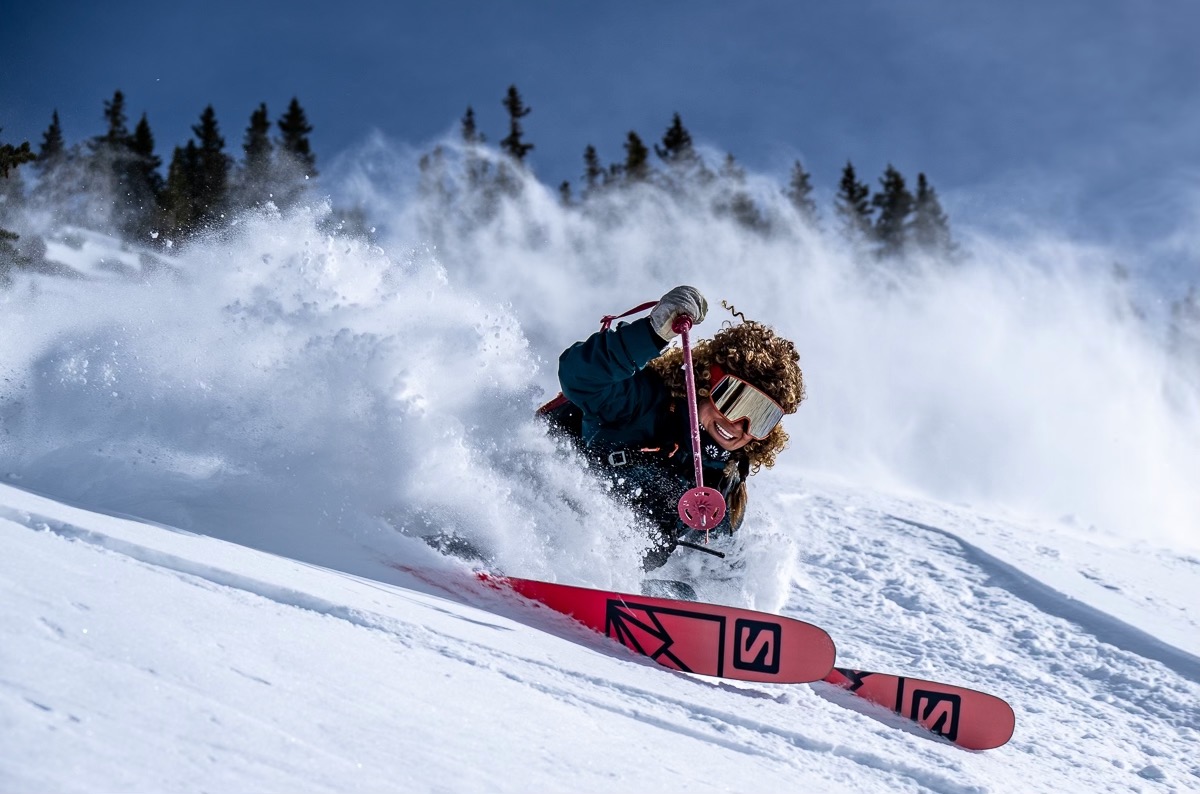
There are many factors I am very fortunate for on this day and after — the favorable weather, the low avalanche hazard, the ability for a helicopter to land, the dedication of everyone on the Search and Rescue team, my familiarity with the location, the gear we had on hand (despite still requiring outside assistance), the location of my breaks, and so much more. I leave with plenty of lessons on how to be better prepared for the worst, because we never anticipate it happening to any of us, yet it eventually does. And when it does, I want to have everything I might need.
That day I packed my mega puff (normally just my emergency layer in the winter months, not an item I typically have on such a nice spring day) in addition to my Gore-Tex kit, lightweight puffy, wind layer, and wool base layers.
I had three pairs of mittens/gloves and a warm hat — which is, again, more of a winter habit and less of a spring habit.
I had a lightweight repair kit and a full first aid kit with painkillers.
I was grateful for every item I had in my pack that day, because I am guilty of skimping on some of these items when I ski what I consider to be quick and familiar backyard laps. Yet, we still didn’t have everything for a successful self-evacuation.
I can’t help but think of all the highly remote locations I ski in regularly, both in Colorado and around the globe. I think about the extreme temperatures I’ll endure; the time of day I’m often willing to head out in order to sneak in a ski tour, even if it’s already late in the afternoon or even the evening; and the adverse weather conditions I ski in that would make it impossible for a helicopter to assist. I think of the complexity of the terrain I ski, and the many avalanche hazards that could complicate any rescue. I consider how much more debilitating a more severe injury could be, and I contemplate the likelihood and consequences on an entirely new level now. I recognize the outcome could have been very different without the assistance of my friends and of SAR.
I humbly share this in the hopes of helping all of us better prepare and learn. I hope it can be received without judgment, as any accident report should be viewed. The more we share, the more we all can learn.


Valuable story. The surprise to me though, was that the writer needed to be evacuated to a flat landing zone for the heli. I was heli-evaced in Champex Lac Switzerland in 1989, having broken my pelvis hitting hidden rocks in deep powder on a closed black run, with forest on each side. The helicopter hovered overhead (I was lucky enough to be carrying a whistle, which I was able to use to attract the attention of another skier who went for help, I was completely immobilised with my injury) and a paramedic/doctor descended on a winch cable gave me a painkiller, and bundled me into a net. We flew like this for some distance to a landing zone, where they put me on a gurney and into the helicopter, before descending to Martigny, where I spent two weeks in hospital. So why is it different in Colorado?
Thank you for sharing this story, I hope you have as quick and full recovery as possible. It’ll be a tough year but you’ll get back to it no problem.
I can’t imagine having to relocate for the rescue, that had to be insanely painful. Like the previous commenter I was lucky enough to get winched up to the heli by SAR with my poorly splinted tibial plateau fracture (your description of your fall gave me a bit of ptsd since it was so familiar). Having an InReach was invaluable and I was also grateful to have sunny skies in December when it happened. Now I take a lot more in my pack, as you suggest, but the thermarest is a great one I hadn’t thought of. I now have a fabric rescue sled which isn’t cheap but also serves as a bivy (if you need help rationalizing its purchase). Also a rolled lightweight Sam Splint that would’ve really helped secure my knee and reduce pain while trying to move and waiting for SAR. Lots of Voile straps and Ace wrap…the list goes on.